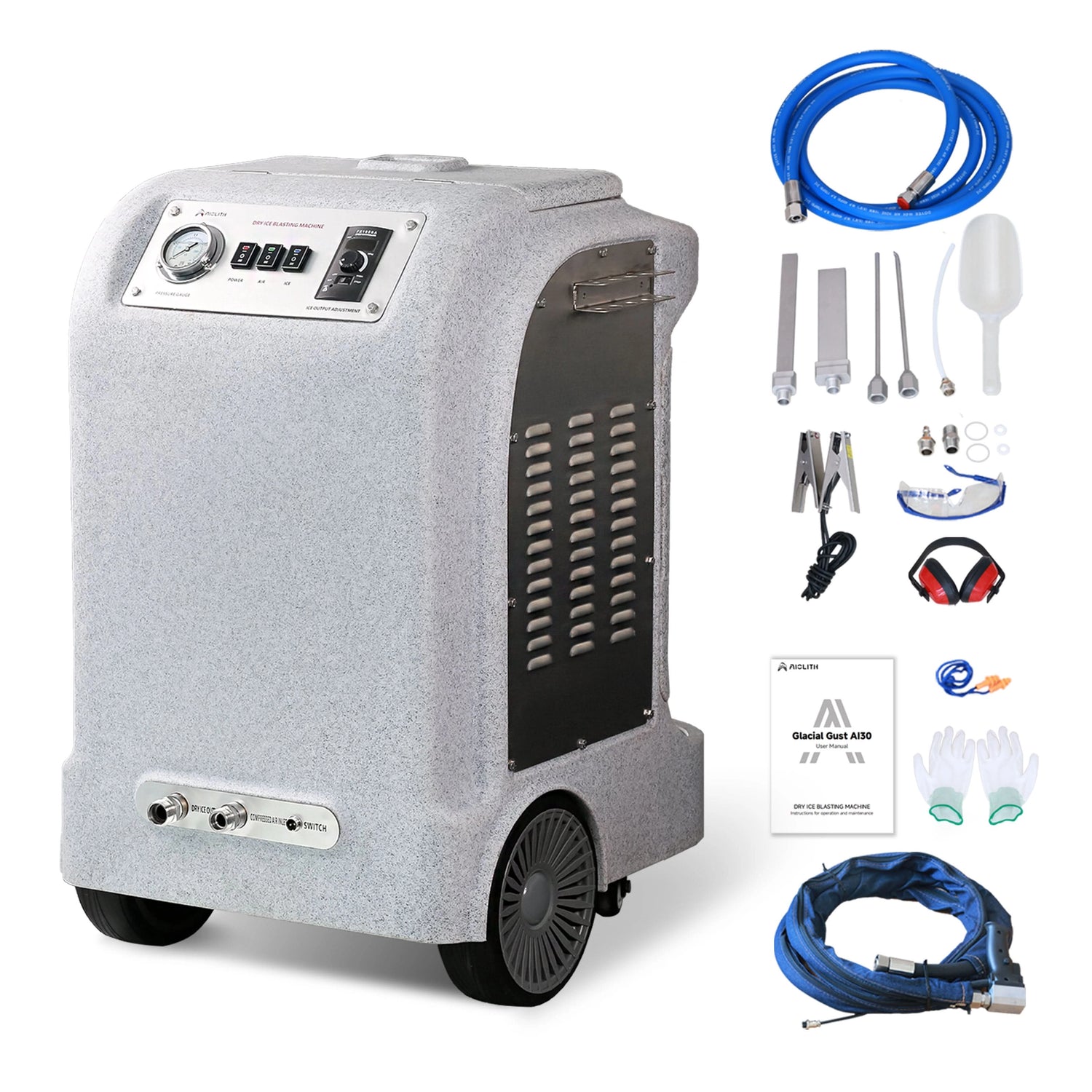Wet Dry Floor Cleaner Showdown: 10 Essential Features You Must Know Before Buying
Share
Introduction to Wet Dry Floor Cleaners
The wet dry floor cleaner is no longer a luxury — it’s a necessity for businesses, warehouses, and institutions that demand spotless floors. Unlike traditional mops, these machines scrub, vacuum, and dry in one pass. They’re faster, cleaner, and more efficient.
Two popular models that stand out in today’s market are the Aiolith AF2013 Walk-Behind Scrubber and the Aiolith AF2217 Automatic Floor Scrubber. Both are high-performing, lithium-powered machines designed for professional cleaning. This article will break down their features, compare them side by side, and guide you in choosing the right one.
Why Modern Facilities Prefer Wet Dry Floor Scrubbers
-
Time Efficiency: Cover large floor areas up to 38,000 ft²/h.
-
Superior Clean: Deep scrubbing removes dirt and water simultaneously.
-
Sustainability: Use less water and solution than mopping.
-
Workplace Safety: Dry floors reduce slip hazards.
-
Cost Reduction: Lower labor costs and fewer cleaning cycles.
Core Features of a Wet Dry Floor Cleaner
Working Width
A larger working width means faster coverage. AF2013 has a 20” width, while AF2217 offers 22”, making it better suited for expansive spaces.
Tank Capacity (Solution & Recovery)
The AF2013 holds 11/13 gallons, while the AF2217 boasts 16/17 gallons, reducing downtime for refills.
Battery Performance & Charging Time
Both models use a 24V/100AH lithium battery, offering 4-hour charging and 5-hour runtime, ensuring uninterrupted cleaning shifts.
Brush Power & Pressure
Scrubbing strength comes from brush RPM and applied pressure. Both operate at 155 RPM, but AF2217 applies 88 lbs pressure versus AF2013’s 66 lbs, offering deeper cleaning.
Noise Levels
At 70 dB, both scrubbers are quiet enough for schools, hospitals, and retail spaces.
Ease of Use
Both machines are cordless, walk-behind models designed for operator comfort and easy maneuverability.
Aiolith AF2013 Walk-Behind Wet Dry Floor Scrubber
Full Technical Specifications
- Working Width: 20”
- Squeegee Width: 32.7”
- Solution Tank: 11 gal
- Recovery Tank: 13 gal
- Max Coverage: 34,000 ft²/h
- Drive: Walk-behind, pad-assist
- Battery: 24V/100AH lithium
- Charging Time: 4H
- Runtime: 5H
- Brush Pressure: 66 lbs
- Brush Speed: 155 rpm
- Brush Motor: 24V/550W
- Suction Motor: 24V/500W
- Noise Level: 70 dB
Key Benefits
- Compact and maneuverable for mid-sized spaces
- Strong balance between tank capacity and portability
- Efficient cleaning with low noise levels
Best Applications
- Schools & universities
- Gyms & recreational centers
- Mid-sized offices
- Retail stores
Aiolith AF2217 Automatic Wet Dry Floor Scrubber
Full Technical Specifications
- Working Width: 22”
- Solution Tank: 16 gal
- Recovery Tank: 17 gal
- Max Coverage: 38,000 ft²/h
- Battery: 24V/100AH lithium
- Charging Time: 4H
- Runtime: 5H
- Brush Pressure: 88 lbs
- Brush Speed: 155 rpm
- Brush Motor: 24V/550W
- Suction Motor: 24V/500W
- Noise Level: 70 dB
Key Benefits
- Larger tank capacity for fewer refills
- Higher brush pressure for tougher cleaning
- Perfect for heavy-duty commercial and industrial spaces
Best Applications
- Hospitals & airports
- Supermarkets & shopping malls
- Large warehouses
- Manufacturing facilities
AF2013 vs AF2217: Side-by-Side Comparison
| Feature | Aiolith AF2013 | Aiolith AF2217 |
|---|---|---|
| Working Width | 20” | 22” |
| Tank Capacity | 11/13 gal | 16/17 gal |
| Coverage | 34,000 ft²/h | 38,000 ft²/h |
| Brush Pressure | 66 lbs | 88 lbs |
| Brush Speed | 155 rpm | 155 rpm |
| Runtime | 5H | 5H |
| Charging Time | 4H | 4H |
| Noise | 70 dB | 70 dB |
| Best For | Medium spaces | Large facilities |
Factors to Consider Before Choosing a Wet Dry Floor Cleaner
Size of Facility
For medium-sized areas, AF2013 is a strong fit. For large-scale cleaning, AF2217 is more efficient.
Frequency of Cleaning
If daily or continuous cleaning is required, a larger tank capacity is more practical.
Type of Flooring
Delicate flooring may require lower brush pressure — favoring the AF2013.
Budget Considerations
AF2013 may be more cost-effective for smaller operations, while AF2217 justifies its price for heavy-duty use.
Expert Tips for Long-Term Maintenance
- Rinse tanks after each use to avoid buildup.
- Regularly check and replace worn brushes.
- Charge lithium batteries properly to extend lifespan.
- Clean filters to maintain suction power.
- Schedule annual servicing for motors and electronics.
FAQs on Wet Dry Floor Cleaners
Can I use these scrubbers on hardwood floors?
Yes, with the correct pads and pressure settings.
How often do I need to replace the brushes?
Typically every 6-12 months depending on usage.
Are these scrubbers eco-friendly?
Yes, they use less water and solution compared to mopping.
Do they work on uneven surfaces?
Yes, but they perform best on smooth commercial flooring.
Can they be used while customers are present?
Absolutely — at 70 dB, they’re quiet enough for retail and office spaces.
How long do the batteries last?
Around 3-5 years with proper care and charging.
Conclusion: Which Scrubber Should You Choose?
The Aiolith AF2013 is perfect for medium-sized spaces that require maneuverability and efficiency, while the AF2217 is designed for large-scale commercial and industrial cleaning with more power and larger tanks.
No matter which you choose, both machines provide a cost-effective, eco-friendly, and professional cleaning solution that far surpasses traditional mopping.
For additional resources on commercial cleaning equipment, visit CleanLink.

